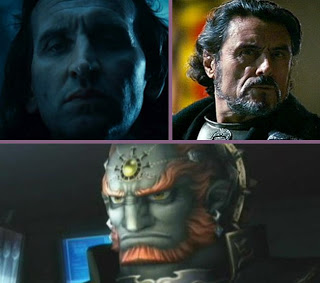Ramstad recounts the recent visit to Seoul of Eammon McKee, Ireland’s ambassador to the Koreas, and a speech he made there wherein he fleshed out the Korea-is-Ireland cliché. He quotes McKee’s speech selectively, compiling a brief list of the ways in which the two nations are similar. This article is written in a pure journalistic style, this article reports on the idea of the two nations having shared traits.
An article about how two disparate nations actually have quite a bit in common is a great way to start of an Annotated Links about different things that, upon further analysis, can easily be considered similar. Thus, this article was an easy pick for this week’s batch.
This one is a brief article that provides an overview of the basic argument for using science fiction in science education: to show the relevance of science to young people so that more of them will take an active interest in pursuing the sciences at college or university. It makes specific reference to science fiction and super hero films while leaving out anything about science fiction literature. Lorditch writes in a direct style of reportage, with an effective use of quotes.
Science fiction and science fact are definitely different, but the limits of human technology are always making gains on the limits of human imagination. This article doesn’t make a direct comparison between science fiction and science in the classroom, but mining science fiction for examples to show how science does and doesn’t work bridges the two nicely.
In this interview with the IBM T.J. Watson Research Center’s Eric Brown, Houpt explores the different uses for IBM’s Question Answering supercomputer Watson. Specifically, Houpt asks about IBM’s work with the US healthcare insurance provider WellPoint and how Watson will figure in with that. It’s written as any interview is bound to be written – in a conversational tone.
Though comparisons between Watson and human personalities don’t come up until near the end of the interview, this piece is included in this week’s Annotated Links because it underscores how a stripped down version of human thinking (parsing sentences, taking certain elements and understanding the relationships between them) is being emulated by computers.
Taylor’s article offers some quick background information on the Picnicface story, along with a very quick rundown of where the three-person comedy trio is today. Her article also offers some thoughts on the matter of internet fame vs. old school fame, and how being popular on YouTube does not necessarily translate being popular on the boob tube. This one is written in a straightforward style, with quotes from players in the Picnicface story sprinkled throughout.
Including this one in the Links for this week was necessarily partly because it fit and partly because of personal prejudices. Picnicface is an hilarious troupe, and the ways in which culture on the internet is different from culture on TV or radio or in print is something that needs more mainstream attention.
Simply a recipe for a cocktail inspired by the Legend of Zelda (clicking on that tag at the bottom of the recipe shows another 4 pages worth of Zelda-inspired booze bombs). This recipe is written in a direct style without any extra notes.
This one’s included for the obvious reason that video games (‘The Legend of Zelda,’ perhaps especially) are not the same as real life. However, it must definitely be noted that medieval medicine (and therefore medicine in a high fantasy setting such as the one in ‘Zelda’) would invariably involve alcohol in some way – so the two different worlds of the real and the virtual are bridged by the cause of and solution to all of life’s problems: alcohol.
Back To Top
Closing
Next week, watch for a poem post for Monday, and Part Four of Shocktober, when I’ll make the call for the conversion of the campy horror flic The Convent.
Plus, over at Tongues in Jars, watch for the fifth stanza of “Dum Diane vitrea” in Tuesday’s Latin entry, and Wiglaf’s tongue lashing of the cowardly thanes in Thursday’s Beowulf entry.



